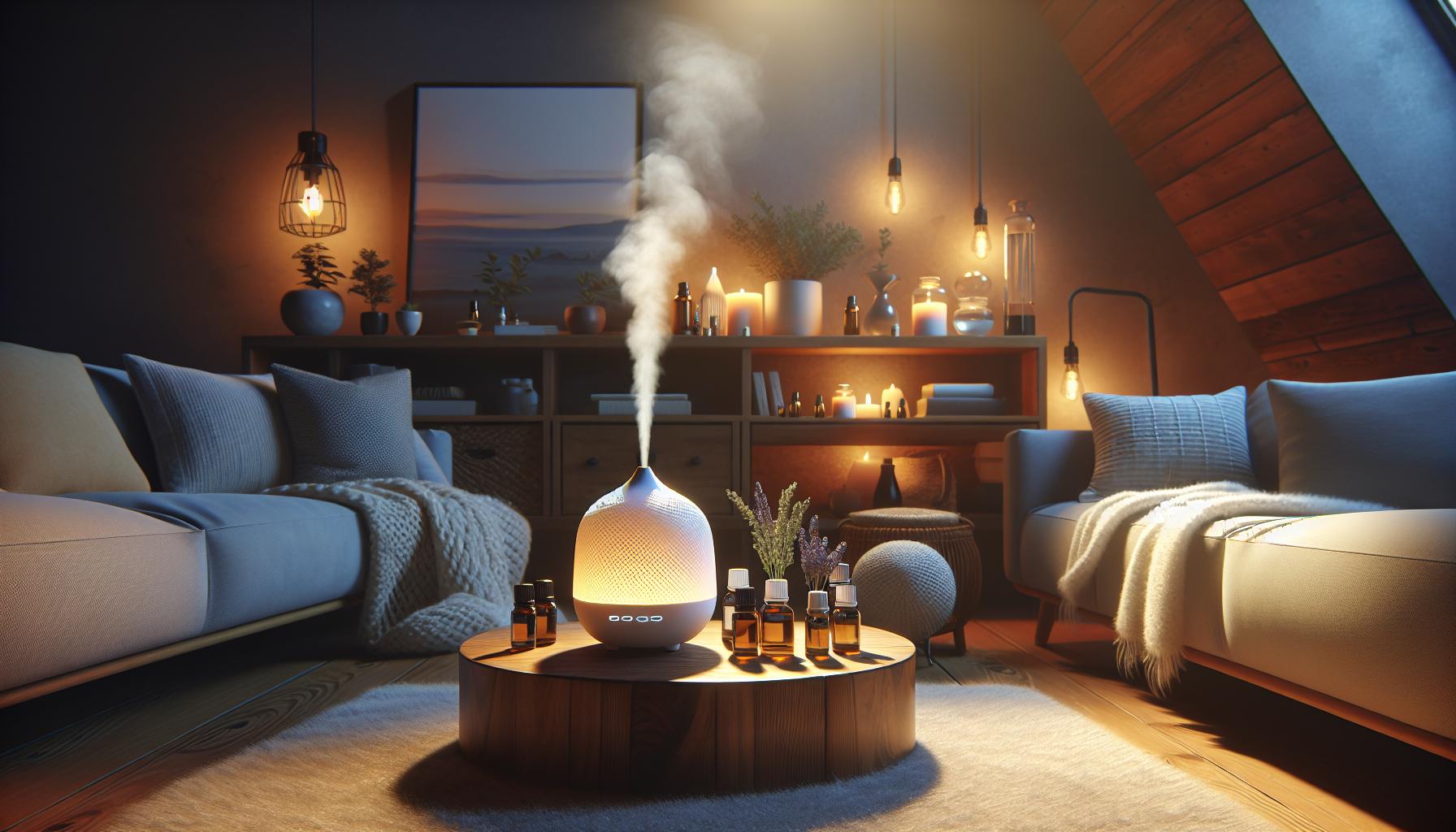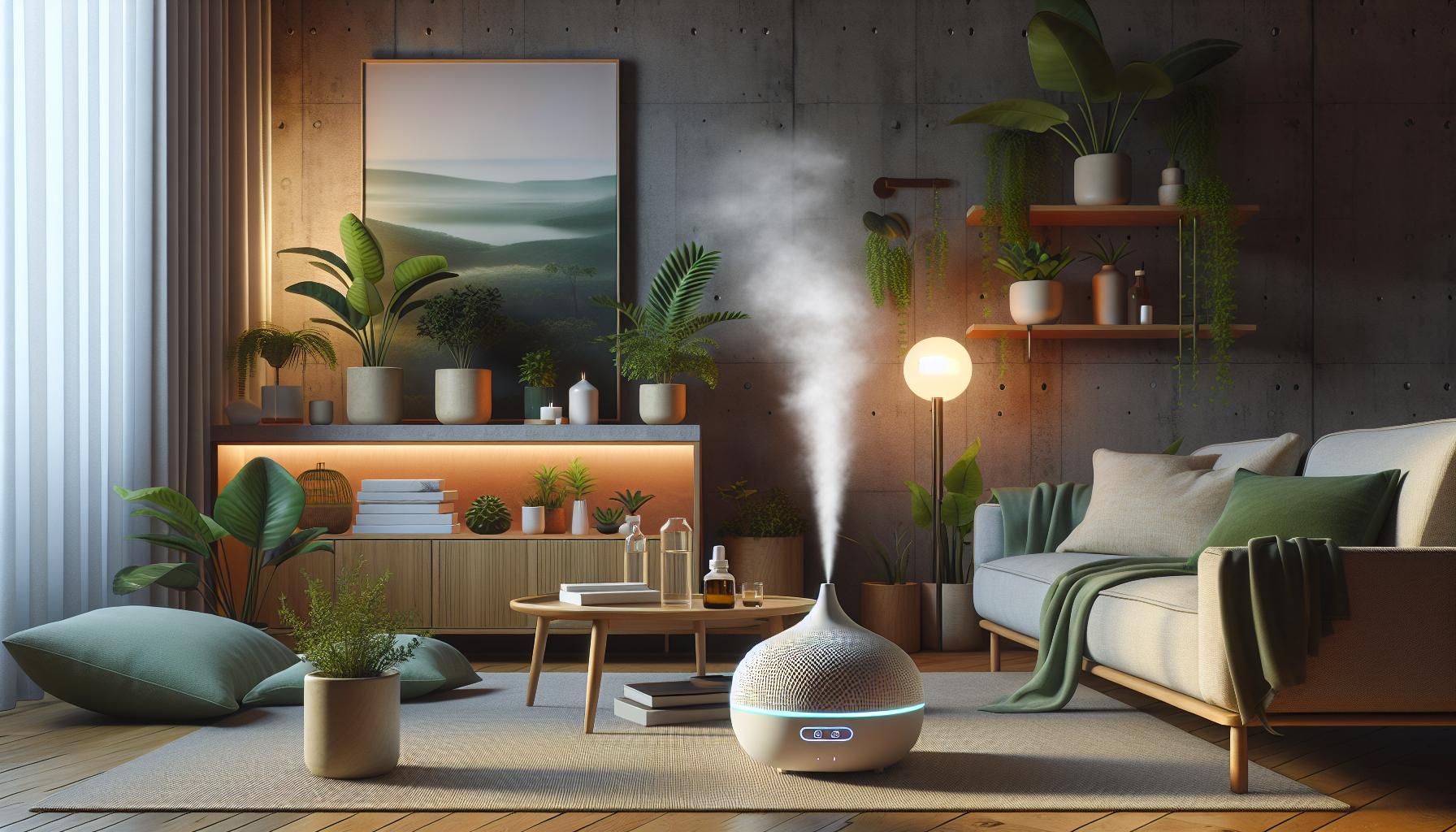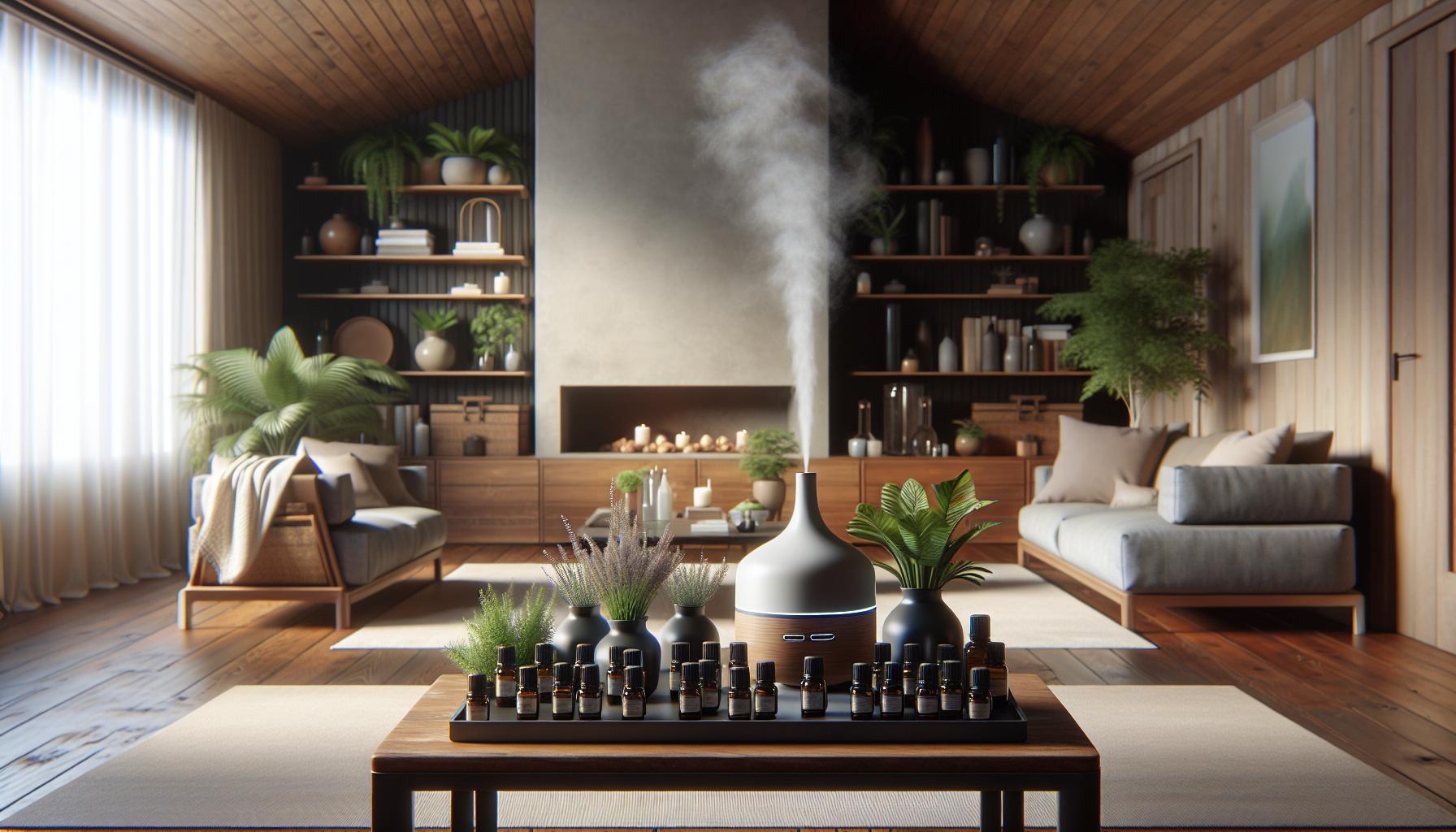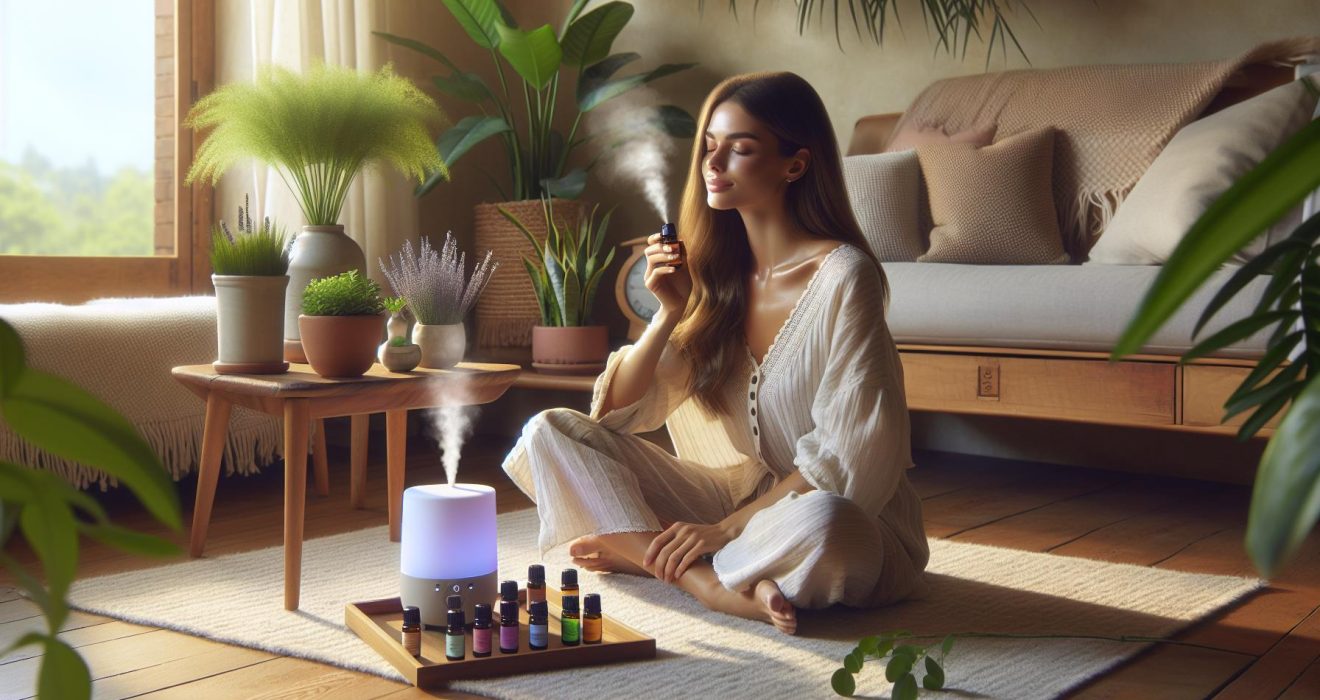How to Use Aromatherapy for Effective Stress Management at Home
Imagine, if you will, stepping into a world where each breath eases the mind just as it soothes the body. That’s the power of aromatherapy, a simple yet profound ally in the quest for tranquility. As I’ve woven it into my daily routine, the transformation has been nothing short of remarkable. The essence of lavender, peppermint, and eucalyptus, to name a few, doesn’t just fill my home with delightful fragrances; they usher in a calm that blankets the chaos of everyday life.
In the cozy nooks of our homes, where stress often finds its hiding spots, aromatherapy emerges as a gentle yet potent remedy. It’s like having a personal retreat at your fingertips. Whether you’re a seasoned enthusiast or a curious newcomer, the art of using essential oils can be mastered with ease, promising not only a serene ambiance but a renewed sense of peace. Join me as we explore how these aromatic wonders can transform your living space into a haven of calm.
Understanding Aromatherapy and Stress Management
Moving from a basic introduction of essential oils, let’s dive deeper into how aromatherapy pairs with stress management to enhance your home environment.
What Is Aromatherapy?
Aromatherapy isn’t just about making your living space smell like a spa; it’s a real-deal, centuries-old practice that uses natural plant extracts to promote health and well-being. Think of it this way: plants have their own methods for thriving. By extracting their essential oils, we tap into their power-packed properties for our own benefit. These oils—capturing the essence of lavender, peppermint, eucalyptus, and more—are then used to elevate mood, boost mental clarity, and yes, even help in reducing stress levels. Whether it’s through diffusers, inhalers, or soaking in an oil-infused bath, each method unleashes the potential to transform your space into a calming haven.
The Link Between Aromatherapy and Stress Relief
Here’s the scoop: when you breathe in essential oil scents, molecules enter your lungs and mingle with your bloodstream before hitting up the brain regions involved in emotions. Yay, science! Specifically, they tickle the limbic system—the part that handles emotional responses and memory processing. This is where things get interesting. Certain scents like lavender have a rep for dialing down the stress reaction, enabling you to relax rather than react. It’s like hitting a mini reset button on your nervous system. So next time you’re on edge, remember that a whiff of lavender or peppermint might just be what you need to steer back to tranquility. Talk about a breath of fresh air for your mental health, right?
Essential Oils for Stress Reduction

Incorporating essential oils into my daily routine has been a game-changer for managing stress right from the comfort of home. These potent scents not only spruce up the living space but also significantly dial down the stress meters.
Lavender Oil
Lavender oil is a superstar in the world of aromatherapy, and I find it especially handy after those long, tug-at-your-hair kind of days. It’s like a calm whisper in the midst of chaos, soothing frazzled nerves with just a few sniffs. Scientifically speaking, lavender oil contains linalool, a compound that gently coaxes your limbic system to chill out—basically telling your brain to take it easy. You can use lavender oil in a diffuser or apply a diluted mixture to your temples and wrists for a personal stress relief shield.
Bergamot Oil
Oh, bergamot oil, you citrusy delight! This oil packs a punch when it comes to brightening moods and slicing through the gloom of stress. Its flair comes from its ability to increase positive feelings in the room and decrease the cortisol levels running rampant during stressful times. Researchers note its efficacy in reducing anxiety in clinical settings—imagine what it can do in your living room! Add a few drops to a diffuser or mix it with a carrier oil for a cheerful, stress-busting massage.
Chamomile Oil
When you think of chamomile, you might think of tea, right? But as an essential oil, chamomile is just as impressive for calming nerves. Known for its gentle sedative effects, chamomile oil works wonders on both the mind and body, making it perfect for evening unwinding sessions. It’s like a soft blanket over your thoughts, easing you into relaxation. Studies show that chamomile’s calming properties aren’t just old wives’ tales, they’re real! Use it in a warm bath or diffuse it in your bedroom to usher in a peaceful, stress-free zone.
How to Use Aromatherapy at Home

Aromatherapy isn’t just about making your home smell like a spa; it’s about transforming your living space into a stress-busting sanctuary. Let’s dive into how you can achieve this serenity with a few simple steps.
Diffusing Essential Oils
Diffusing essential oils is like having a tiny, private spa tucked away in the corner of your room. Here’s how I set the mood for relaxation:
- Choosing the Right Diffuser: An ultrasonic diffuser is perfect for beginners. It uses water and essential oils to create a fine mist that disperses scents gently throughout your room.
- Selecting Oils: Start with lavender for calming, peppermint for energizing, and eucalyptus for that clean, spa-like scent.
- Setting the Scene: Place your diffuser in a central location but away from direct light or heat sources. Running it for 30-60 minutes is plenty to fill your space with soothing vibes.
Topical Application Methods
Applying essential oils directly can be a game changer in your stress management routine. Here’s how I do it safely:
- Dilute, Dilute, Dilute: Essential oils are potent, so always mix them with a carrier oil like coconut or jojoba oil. A good rule of thumb is about three to five drops of essential oil per ounce of carrier oil.
- Apply with Care: Target stress points like wrists, temples, and the back of your neck. Just a dab on these pulse points can really help ease tension.
- Test First: Always do a patch test on a small area of skin first to ensure you don’t have any reactions. Safety first!
DIY Aromatherapy Recipes
Creating your own aromatherapy blends means customizing scents that cater specifically to your stress levels. Here are a couple of my go-to recipes:
- Sleep Easy Blend: Mix 5 drops of lavender oil with 3 drops of chamomile and 2 drops of bergamot in your diffuser. It’s great for unwinding before bed.
- Morning Pep-Up Spray: Combine 4 drops of peppermint oil, 2 drops of lemon oil, and 4 drops of water in a spray bottle. Spritz around your workspace to boost your focus and mood.
Safety Tips and Best Practices

Aromatherapy isn’t just about making your home smell like a spa; it’s about using scents to squash stress—safely and smartly. Let’s dive into the essential safety tips and best practices to make your aromatic journey as serene and safe as possible.
Recognizing Quality Essential Oils
When it comes to essential oils, not all bottles are created equal. First off, always check for purity. A high-quality oil will boast 100% pure essential oil on its label. Anything less, and you might be inhaling more fillers than feelings of tranquility. Next up, packaging wisdom—quality oils come in dark glass bottles. This isn’t just for aesthetics; it protects the precious contents from sunlight degradation. If the oil is chilling in a clear or plastic bottle, it’s likely not the MVP of purity.
Another quick tip? Price checks. If it’s super cheap, it’s probably as effective as a decaf coffee at midnight—i.e., not very. True essential oils require tons of plant material to produce a tiny bottle, so a low price tag can be a big red flag.
Lastly, the sniff test. Quality oils smell like their botanical origins rather than a chemical factory. If it smells more ‘artificial watermelon’ than ‘walk through lavender fields,’ you might want to pass.
Safe Usage of Essential Oils
Just because it’s natural, doesn’t mean it’s a free-for-all. Essential oils are potent, and I respect their power by following the golden rules of safe use. Rule one: dilution is your friend. Always mix essential oils with a carrier oil—like coconut or jojoba—before skin application to avoid irritation. Think of it this way: you wouldn’t drink espresso shots all day, right? Same principle—they need to be diluted.
Rule two involves our wonderful world of modern technology. Trust me, invest in a good quality diffuser. It evenly disperses the oil in the air, giving you all the benefits without overdoing it. Plus, it prevents that overwhelming ‘whoa-too-much’ scent blast that can send everyone running rather than relaxing.
And regarding application—keep it external. As tempting as it may be to add a drop of peppermint oil to your water for that zing, essential oils can wreak havoc on your internal systems if ingested without professional guidance.
Always do a patch test to prevent an ‘oh no’ allergic reaction moment. Just dab a little diluted oil on your arm and wait. No Armageddon? Good to go! Lastly, keep these liquid calmers out of reach of your toddlers and pets—safety first!
By ensuring you’re clued into these quality and safety guidelines, your home can transform into a stress-soothing sanctuary, all without a hitch.
Conclusion
I’ve shared my journey with aromatherapy and how it’s reshaped my approach to stress management at home. By embracing the soothing power of essential oils you too can enhance your living space and mental well-being. Whether you’re diffusing lavender to calm your nerves or applying bergamot for a mood boost the possibilities are endless. Remember always prioritize safety and quality in your selections. Here’s to finding your peace and tranquility through the delightful art of aromatherapy!

